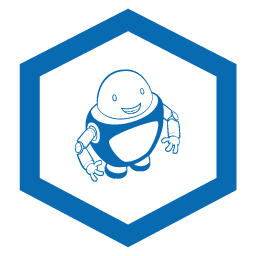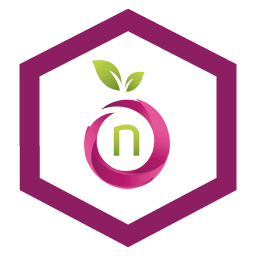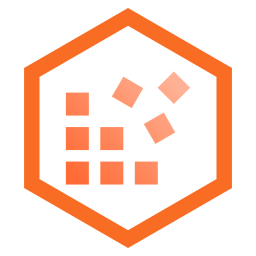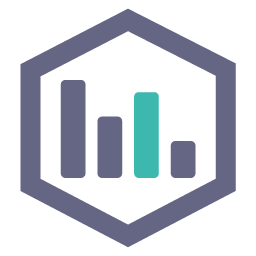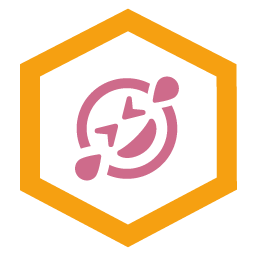Identify Target Market: Key Strategies for Business Growth
Before you can sell anything, you have to know who you’re selling to. It’s easy to fall into the trap of thinking your product is for everyone, but that’s a direct path to wasted money and effort. The real magic happens when you stop shouting into the void and start talking to the specific group of people who are genuinely looking for what you offer.
This means digging deep into their world - understanding their demographics, their habits, and what truly motivates them. Getting this right isn't just a preliminary step; it's the strategic bedrock for every smart decision you'll make in marketing, product development, and branding.
Why Guessing Your Target Market Is a Losing Game
Trying to be everything to everyone is one of the most common—and costly—mistakes a business can make. When your target is "anyone," your marketing messages become so generic and diluted they resonate with no one. It's like taking a shot in the dark and hoping you hit something, anything.
In sharp contrast, a clearly defined audience is your strategic blueprint. It guides everything from the features you develop to the tone of voice you use on social media. This level of precision is what separates businesses that gain real traction from those that just spin their wheels.
When you truly understand your audience, you can craft marketing that feels personal and relevant, which naturally boosts engagement and delivers a much stronger return on your investment.
The Concrete Business Wins of Knowing Your Customer
Defining your audience isn't just a fluffy marketing exercise; it's a core business strategy that produces tangible results. When you know exactly who you’re talking to, the benefits cascade across your entire operation.
- Sharpen Your Product-Market Fit: You can build products and services that solve actual problems for a specific group, which is the key to creating happy, loyal customers.
- Maximize Your Marketing ROI: Instead of spreading your budget thin, you can focus on the channels and messages that are most likely to convert, driving down your customer acquisition costs.
- Build a Stronger Brand Identity: A powerful brand is one that reflects the values and aspirations of its ideal customers. Check out our guide on creating a brand identity to see how these two concepts are deeply connected.
The business world is taking notice. The market for research and analysis services is expected to climb from $81.32 billion in 2024 to $84.37 billion in 2025 alone. This isn't just a trend; it's a clear signal that companies are investing heavily in understanding their customers.
To put it simply, defining your target audience transforms your strategy from guesswork into a focused, data-driven plan. The following table breaks down the core components of this process.
Key Pillars of Target Market Identification
| Component | Objective | Key Outcome |
|---|---|---|
| Market Research | To gather raw data on potential customers and the competitive landscape. | A foundational understanding of market size, trends, and opportunities. |
| Segmentation | To divide the broad market into smaller, manageable groups with shared traits. | Actionable segments (e.g., "eco-conscious millennials") to target. |
| Persona Creation | To build a fictional, detailed profile of an ideal customer from a key segment. | A relatable, human-centered guide for marketing and product decisions. |
Each pillar builds on the last, giving you a progressively clearer picture of who your customer is and what they need from you.
A clearly defined target market turns ambiguity into clarity. It ensures that every dollar spent and every hour invested is pushing your business in the right direction, toward sustainable growth and a loyal customer base.
Ultimately, identifying your target market is about working smarter, not harder. It’s the first and most critical step in building a business that doesn’t just survive, but thrives.
Digging for Gold: How to Conduct Market Research That Actually Works
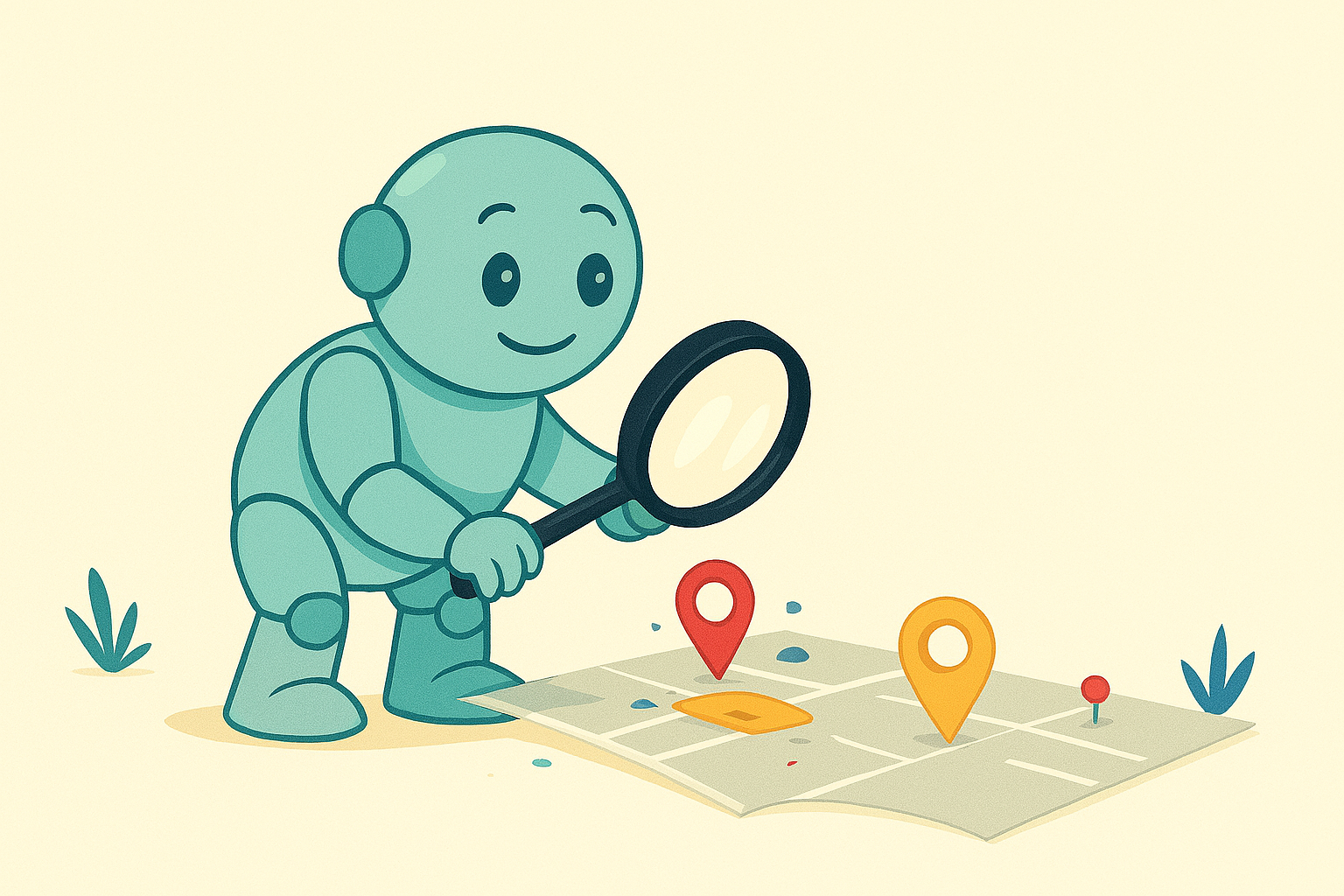
If you want to truly pin down your target market, you have to get your hands dirty with real data. Guesswork and assumptions just won't cut it. Effective market research isn't about finding anyone who might be interested in what you sell; it's about systematically uncovering the specific groups actively looking for what you offer.
The best way I've found to do this is a two-pronged attack: start by looking inward at what you already have, then look outward to the wider market.
Your journey should always begin with your existing customers. They are a literal goldmine of information, holding the clearest clues about who finds your work valuable. Digging into this group helps you connect the dots and see patterns you might have missed.
Once you have that internal picture, you can start looking at your competitors. Analyzing who they're talking to—and just as importantly, who they're ignoring—is where you'll find the gaps. These gaps are your opportunities to carve out a unique space for your brand.
Start with the People Who Already Pay You
Your best research subjects are the customers you already have. Seriously, don't overlook this. Start by pulling together information from your sales data, CRM, and website analytics to get a baseline profile.
Look for the obvious demographic patterns in things like age, location, and job titles. But don't stop there. The real magic happens when you analyze their behavior.
- What specific products or services do they buy most often?
- What's their average spend?
- How did they find you in the first place? Was it a Google search, a referral, or social media?
Answering these questions turns a simple customer list into a powerful set of insights. You might just discover that your most valuable customers aren't who you thought they were, which can completely shift your marketing focus toward a much more profitable audience.
Don’t just look at who buys, but how and why they buy. A small, loyal group of high-spending customers is almost always more valuable than a huge crowd of one-off, low-spending buyers. Understanding this alone can reframe your entire strategy.
Get Fresh Insights with Primary Research
Analyzing existing data is a great start, but sometimes you just need to ask. This is where primary research methods like surveys and interviews become your best friends. They let you gather fresh, tailored information directly from the source.
When it comes to surveys, keep them short and to the point. Focus on their biggest challenges, their goals, and what they truly value in a solution like yours. A simple 5-10 question survey sent to your email list can uncover a wealth of qualitative data. I love asking questions like, "What was the single biggest challenge you faced right before you found us?" It gets straight to the core motivation for their purchase.
Interviews, on the other hand, let you go even deeper. You’d be amazed at what you can learn in a 15-minute chat with a loyal customer. You'll hear the exact words they use, understand their real frustrations, and get a feel for their personality—all of which is pure gold for crafting marketing messages that actually connect.
You don't need a massive budget for this. Simple, focused efforts can give you all the intelligence you need to define your target market with confidence.
Segmenting Your Market for Precision and Impact
So, you've done your market research and now you're sitting on a mountain of data. What's next? You need to give that data shape and purpose. This is the art of market segmentation: taking a broad, potential audience and carving it into smaller, well-defined groups of people who share meaningful traits.
Think of it as the difference between shouting into a crowded stadium and pulling someone aside for a real conversation.
Trying to be everything to everyone is a classic rookie mistake. It leads to watered-down messages and wasted marketing dollars. When you segment, you can craft everything—your product features, your marketing copy, even your brand name—to connect with the specific people who are most likely to become loyal customers. A B2B software company, for instance, would never speak to a scrappy startup founder the same way it would to an enterprise IT director. The language, pain points, and goals are completely different.
This precision is what turns generic campaigns into hyper-relevant experiences that actually drive results.
The Core Ways to Slice Up a Market
In my experience, almost all segmentation strategies boil down to four main approaches. The real magic happens when you start layering them on top of each other to get a truly dimensional picture of your ideal customer.
-
Demographic Segmentation: This is your foundation. It’s the who: age, income, gender, education, occupation. It’s straightforward, statistical, and an absolutely essential starting point for understanding the basic makeup of your audience.
-
Geographic Segmentation: This is the where: country, state, city, or even neighborhood. It can be as simple as a clothing brand marketing winter coats to people in cold climates and swimwear to those in tropical ones. Location matters.
-
Psychographic Segmentation: Now we’re getting to the why. This is all about what makes your audience tick—their values, lifestyles, interests, and attitudes. Are they driven by ambition, comfort, adventure, or a desire for sustainability? This is how you build a genuine emotional connection.
-
Behavioral Segmentation: This one is all about their actions. It looks at how people interact with your brand or category, grouping them by their purchasing habits, brand loyalty, or usage rates. You can spot your power users, first-time buyers, or people who need a little nudge to complete a purchase.
Bringing Segmentation to Life
Let’s make this real. Imagine you're launching a direct-to-consumer sustainable fashion brand. Targeting "women aged 25-40" is just too vague to be useful. But by layering these segmentation methods, we can get incredibly specific.
- Demographic: Women, ages 28-35, with a household income over $75,000.
- Geographic: Living in major urban centers in North America and Western Europe.
- Psychographic: They deeply value ethical production and minimalist design. They’re active on social media, following slow-fashion influencers and reading blogs about conscious living.
- Behavioral: They consistently buy from other sustainable brands and aren't afraid to pay more for products that are transparent and high-quality.
All of a sudden, a faceless group becomes a tangible, actionable segment you can name: "Urban Millennial Conscious Consumers." This newfound clarity changes everything. It guides product development, marketing channels, and even the name itself. A name like "EverVana" would resonate with this group far more than something like "FashionBargains."
Today’s technology makes this process more potent than ever. By 2025, more businesses are using AI-driven insights to supercharge their demographic analysis, breaking down customer data with incredible speed and accuracy. You can find more practical market segmentation examples and strategies to see how others are putting this into practice.
Bringing Your Audience to Life with Customer Personas
Market segments give you a map, but customer personas give you a destination. Once you've grouped your audience through segmentation, the real magic happens when you make those abstract groups feel human. This is how you identify a target market not just as data points, but as people with names, faces, and real-world problems.
A customer persona (or buyer persona) is essentially a detailed, semi-fictional profile of your ideal customer from a specific segment. You build it from your market research and actual data, but it should read like a story—a character sketch for your business.
Instead of targeting a vague group like "startup founders," you get to create "Startup CTO Steve." It seems like a small shift, but it’s powerful. It completely changes how your team thinks, making it so much easier to build products and write copy that speaks directly to a person, not a demographic. When you have a clear picture of Steve, every decision becomes more focused.
Crafting a Persona That Actually Works
A great persona goes far beyond surface-level details. While age and income are a decent starting point, the real value comes from digging into the motivations and challenges that drive a person's decisions. A truly effective persona should act as a compass for your entire team, from product developers to sales reps.
Here’s a practical framework for the kind of information that makes a persona genuinely useful:
- Background and Demographics: Give them a name, age, job title, and a general income level. Where do they live? What’s their educational background? This just sets the scene.
- Goals and Motivations: What is this person actually trying to achieve? It could be a professional goal, like chasing a promotion, or a personal one, like finding a better work-life balance or making more sustainable choices.
- Daily Challenges and Pain Points: What frustrates them every day? What obstacles are standing between them and their goals? This is exactly where your solution should fit.
- Values and Interests: What do they care about beyond their immediate problems? This could be anything from innovation and efficiency to community and authenticity.
A well-crafted persona is more than just a document; it’s a shared understanding of who the customer is. When everyone from marketing to engineering is building for "Eco-Conscious Megan," the entire business aligns. You stop arguing about features and start asking, "What would Megan want?"
A Tale of Two Personas
Let's see this in action. Imagine a company that sells project management software. They could create two very different personas to guide their strategy.
Persona 1: "Startup CTO Steve"
- Background: 38-year-old CTO at a fast-growing tech startup. Manages a team of 15 developers.
- Goals: Ship new features fast and keep his remote team aligned without getting buried in administrative busywork.
- Challenges: He hates clunky, slow software. He finds it impossible to get a high-level view of project progress without calling constant meetings.
- Values: Efficiency, powerful integrations, and tools that "just work."
Persona 2: "Agency Project Manager Chloe"
- Background: 32-year-old Project Manager at a creative marketing agency. She’s juggling 5-7 client projects at any given time.
- Goals: Keep clients happy with crystal-clear communication and on-time deliverables. She also needs to track billable hours accurately.
- Challenges: Managing client expectations and preventing scope creep is a constant battle. She struggles with tools that lack robust reporting features.
- Values: Collaboration, clear reporting, and tools that make her agency look good to clients.
By building out these detailed profiles, the software company can now tailor everything. Steve gets marketing that highlights speed and integrations. Chloe sees ads that talk about client portals and profitability reports. This is how you effectively identify a target market and connect with each part of it on a genuinely personal level.
Testing And Refining Your Market Assumptions
Identifying your target market isn't a one-and-done task. I've learned from experience that it’s a living, breathing part of your business strategy that needs constant attention. Your initial research and well-crafted personas are essentially educated guesses—powerful ones, but hypotheses nonetheless. They need to be tested in the real world. This is where you shift from theory to practice, using small, controlled experiments to see if your assumptions hold up without risking your entire budget.
This feedback loop is what separates thriving businesses from those that lose touch. It’s all about staying agile, listening to what the data is telling you, and having the courage to pivot when the market points you in a new direction.
Using Digital Ads For Rapid Validation
One of the most effective ways I've seen to test market segments quickly is with small-budget digital ad campaigns. Platforms like Google Ads and Meta Ads are fantastic for this because their targeting capabilities are incredibly precise. You can build small, focused campaigns aimed directly at the customer personas you’ve developed.
Let’s imagine you’re launching a project management tool. You could run two distinct ad campaigns:
- Campaign A: This one is for "Startup CTO Steve." The messaging would focus on efficiency, technical integrations, and how your tool streamlines development workflows.
- Campaign B: This one targets "Agency PM Chloe." The ad copy here would highlight client reporting features, team collaboration, and managing multiple project timelines.
By putting a modest budget behind each—even just $100-$200 per campaign—you can get a very quick read on which group is more responsive. Keep an eye on metrics like click-through rates (CTR), cost per click (CPC), and, most importantly, conversions on a dedicated landing page. A much higher CTR from Steve's group is a strong signal that you've found a receptive audience.
A key insight I've gained is to look beyond just the clicks. A lower CTR from a segment that converts at a much higher rate is often more valuable. It means you’re reaching the right people, even if there are fewer of them.
This kind of testing helps you identify a target market that not only shows interest but is also ready to take action. It provides hard data to sharpen your focus.
A Practical Comparison Of Market Validation Methods
To get a clear picture of your options, it helps to compare different validation methods. Each has its place, depending on your budget, timeline, and what you need to learn. Here's a quick breakdown to help you decide which approach works best for your situation.
| Validation Method | Cost | Speed | Best For |
|---|---|---|---|
| Digital Ad Tests | Low ($100-$500) | Fast (Days) | Quickly testing messaging and audience-product fit with real users. |
| Surveys | Low-Medium | Medium (Weeks) | Gathering quantitative data on preferences and pain points. |
| Customer Interviews | Medium (Time-intensive) | Slow (Weeks-Months) | Gaining deep qualitative insights into "why" customers behave a certain way. |
| Landing Page A/B Tests | Low | Fast (Days-Weeks) | Optimizing value propositions and calls-to-action for a specific audience. |
Ultimately, a mix of these methods will give you the most complete and reliable picture of your market. Start small, learn, and then scale what works.
Analyzing Real-World Engagement And Sales Data
Beyond paid ads, your existing channels are a goldmine for validation. Keep a close watch on your social media analytics and website traffic. What kind of content truly connects with your audience?
Maybe you notice that posts about sustainability are getting way more shares and comments, or that technical deep-dives in your newsletter generate the most clicks. This is direct feedback confirming the psychographic and behavioral traits you mapped out in your personas. A/B testing your landing pages is another incredibly powerful technique. You can test different headlines, value propositions, or calls-to-action to see which message truly clicks with each segment.
The chart below shows a hypothetical breakdown of customer segments based on initial sales data. It’s a great example of how you can visualize where your revenue is actually coming from.
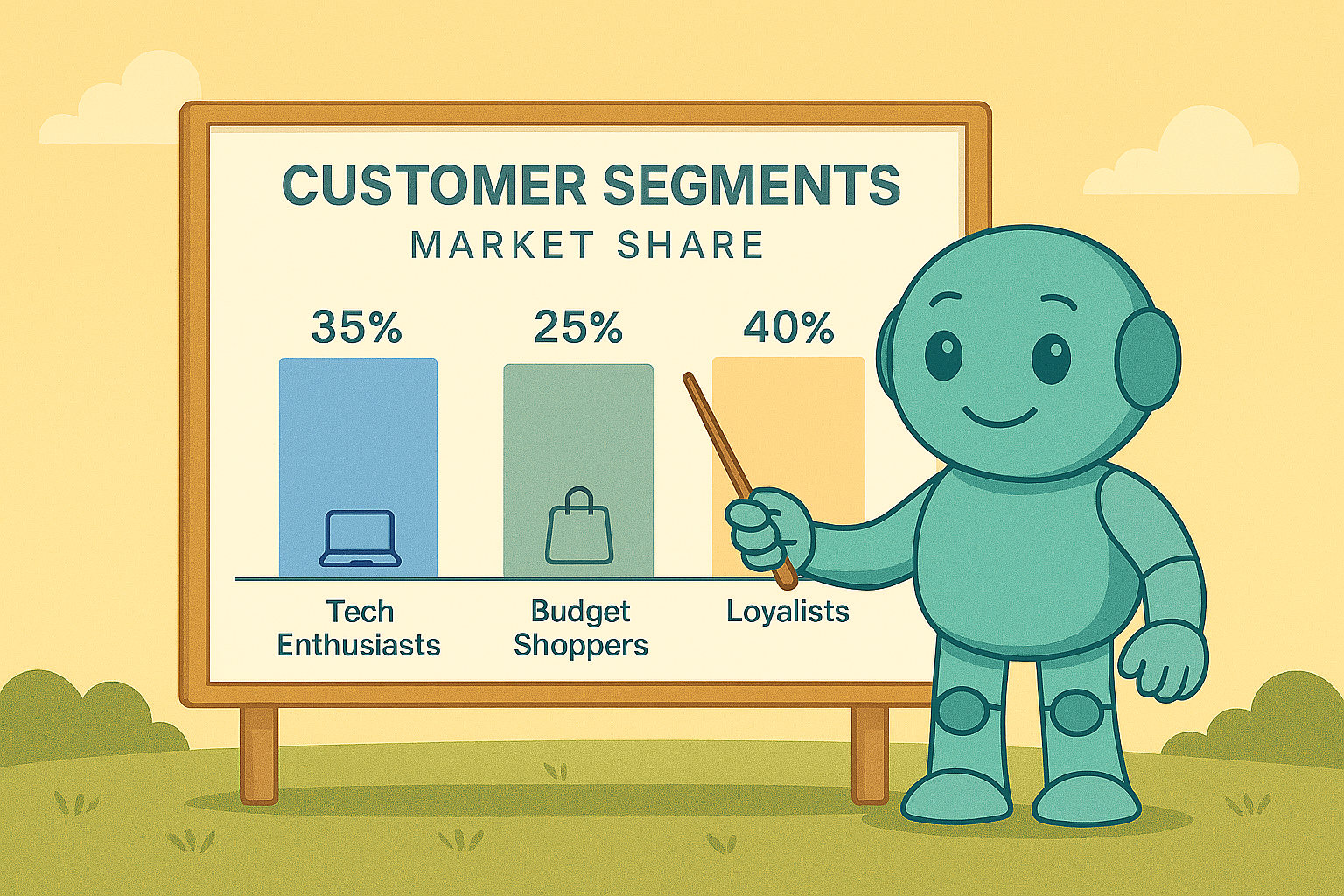
As you can see, while "Loyalists" are the biggest slice of the pie, the "Tech Enthusiasts" represent a significant and high-growth segment you wouldn’t want to ignore. This kind of data-driven insight is powerful. In fact, companies that execute advanced personalization often see a revenue bump of 5-10%.
Ultimately, this testing process validates more than just your audience. It refines your messaging and can even tell you which brand name will perform best. When you're weighing multiple name ideas, putting them in front of different segments can reveal which one connects most deeply. For more on this, you can check out our detailed guide on how to decide on a name with your ideal customer in mind.
Answering Your Top Questions About Identifying a Target Market
Even with the best research plan, you're bound to run into some tricky questions when trying to pin down your target market. It's a process filled with nuance, and hitting a few bumps is completely normal. I've seen it happen time and again.
Let's walk through some of the most common questions that come up during market research and segmentation. Think of this as your field guide for clearing up those lingering uncertainties so you can move forward with confidence.
How Niche is Too Niche?
One of the biggest anxieties I hear is about getting too specific and accidentally leaving potential customers on the table. It's a valid concern, but in reality, being too vague is a much costlier mistake. When you try to speak to everyone, your message gets so diluted that it ends up resonating with no one.
The real goal here isn't exclusion; it's focus. You're concentrating your energy and budget on the group of people most likely to become your biggest fans. A good rule of thumb? Get specific enough that you can visualize a real person. You should be able to describe their daily routine, their frustrations, and exactly how your product or service fits into their life to solve a problem. If your segment feels less like a statistic and more like someone you know, you've hit the sweet spot.
Don’t shy away from a niche. It’s almost always better to be a big fish in a small pond than an invisible guppy in the ocean. A focused approach gives you a rock-solid foundation to build on.
What if I Have More Than One Target Market?
It’s actually quite common to have several distinct audiences. Imagine a project management tool—it might be perfect for solo freelancers managing their own clients, but it could also be a game-changer for small agency teams. The critical mistake is trying to lump them all together.
You need to treat each group as its own separate entity. This means you should be:
- Building a unique customer persona for each one.
- Crafting tailored messaging that hits on their specific pain points and goals.
- Using different marketing channels to reach them where they naturally spend their time.
Juggling multiple segments definitely takes more work upfront. But the payoff is a significantly stronger connection with each audience because you’re showing them you understand their unique world, rather than offering a generic solution that doesn’t quite fit anyone perfectly. You can learn more about what makes a good brand name that can resonate across different, yet related, customer groups.
How Often Should I Revisit My Target Market Analysis?
Defining your target market isn't a "set it and forget it" task. Markets are living things—they shift, customer behaviors evolve, and new competitors pop up. Things change.
I always advise clients to revisit their customer personas and market segments at least once a year.
Block out some time to dive back into your sales data, check out recent customer feedback, and maybe run a new survey. Does your ideal customer profile from last year still hold up? This annual check-in keeps your entire strategy grounded in reality and helps your business stay agile enough to respond to what's happening right now.
Feeling solid on who you're talking to is the first major victory. The next challenge is finding a name that actually speaks to them. NameRobot offers a suite of tools, from AI-powered generators to deep-dive checks, designed to help you land a brand name that truly connects with your ideal customer. Explore our naming tools at https://namerobot.com.


